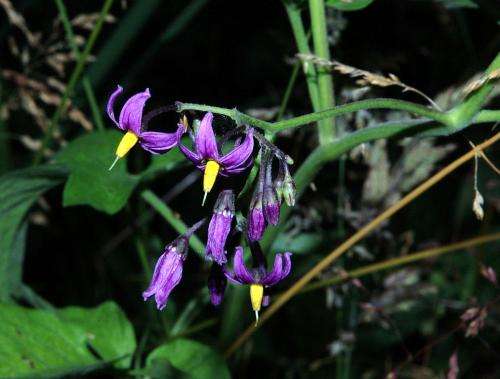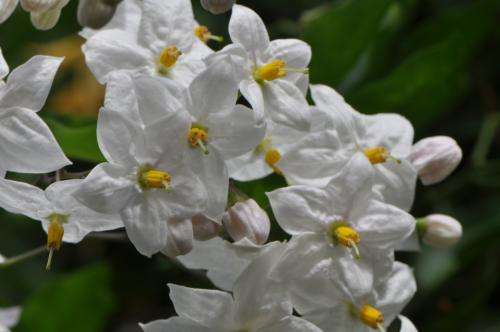Do potatoes grow on vines? A review of the wild relatives of some favorite food plants

The Solanaceae, also called the potato or nightshade family, includes a wide range of flowering plants, some of which are important agricultural crops. Tomatoes, potatoes, aubergines, peppers and wolfberries are all representatives of the family present on many tables across the world. Solanum is the largest genus of the family, and with 1500 species, is one of the largest genera of flowering plants. Solanum has 13 major evolutionary groups,or clades. This new study published in the open access journal Phytokeys offers a complete revision of all of the species of the Dulcamaroid clade, including the description of a new species endemic to the forests of Ecuador.
The species-rich genus Solanum has remained remarkably underexplored until relatively recently, despite the economic importance of some of its members such as potato (Solanum tuberosum) and tomato (Solanum lycopersicum) . A project funded by the United States National Science Foundation's Planetary Biodiversity Inventory program begun in 2004 sought to redress this situation by attempting to accelerate species-level taxonomy and at the same time prove a robust genetic background to the research. This research is a part of this effort, providing a revision of all the species of an entire clade of Solanum. Extensive and detailed, this study follows historical and taxonomic changes within the Dulcamaroid clade to provide detailed and very importantly community shared summary. Publication in PhytoKeys means the data from the in-depth taxonomic work will be shared with a wide audience who can re-use the data for further work with these plants.

"Work by participants of the 'PBI Solanum' project will result in a modern monographic treatment of the entire genus available on-line. This treatment is part of this collaborative effort."explains Dr. Sandra Knapp, the author of this extensive contribution.
Members of the Dulcamaroid clade are all woody plants and vary in appearance from shrubs to vines. Some are large canopy lianas, while other vining species are woody only at the base. All representatives have beautiful clusters of flowers varying in color from deep purple, through fuchsia and pale pink, to pure white. Species in the group are native to both the New and Old Worlds - with the highest species diversity in Argentina and Peru. Among the species included in this revision is the common European woody nightshade, Solanum dulcamara, distributed all over the northern hemisphere and having a long history of medicinal use.

The new species described in this revision, Solanum agnoston, discovered by Dr. Sandra Knapp, Department of Life Sciences, The Natural History Museum, UK, comes from the inter Andean valleys of Southern Ecuador and is only known from two collections. Many of the other species of the group are similarly rare - of the 45 species 14 are threatened or endangered. Two of the most well-known decorative representatives of the group featured in the study are S. crispum, also known as Chilean potato vine or Chilean nightshade, and S. laxum, commonly called potato climber or jasmine nightshade. Both of these species are native to South America - S. crispum from Chile and S. laxum from southern Brazil and Argentina - but are today cultivated all over the world.
More information: Knapp S (2013) A revision of the Dulcamaroid Clade of Solanum L. (Solanaceae). PhytoKeys 22: 1, doi: 10.3897/phytokeys.22.4041
Journal information: PhytoKeys
Provided by Pensoft Publishers




















